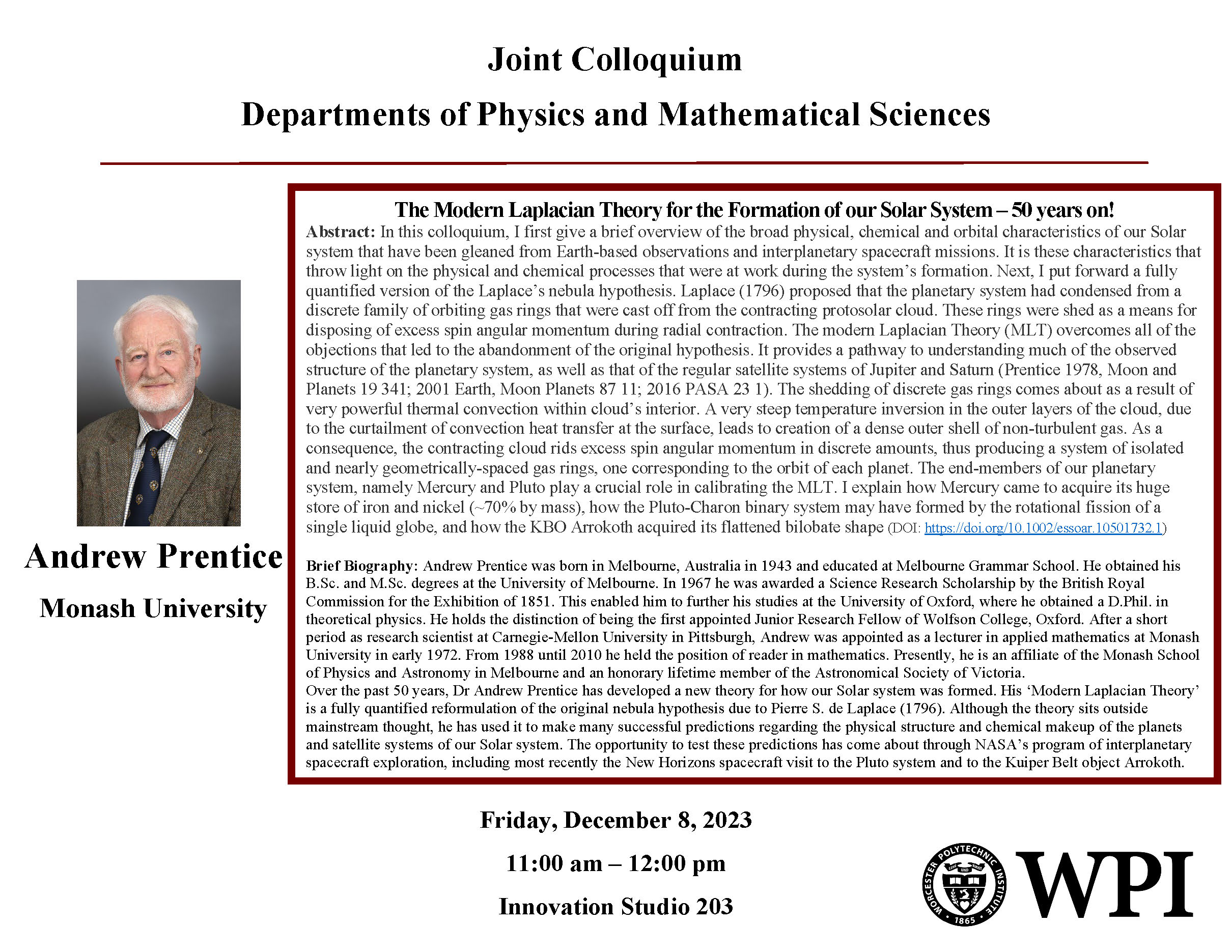Mathematical Sciences Department Colloquium - Andrew Prentice, Monash University "The Modern Laplacian Theory for the Formation of our Solar System – 50 years on!" (IS 203)
11:00 a.m. to 12:00 p.m.

Mathematical Sciences Department
Colloquium
Speaker: Andrew Prentice, Monash University
Friday, December 8, 2023
11:00 am - 12:00 pm
Innovation Studio 203
Title: The Modern Laplacian Theory for the Formation of our Solar System – 50 years on!
Abstract: In this colloquium, I first give a brief overview of the broad physical, chemical and orbital characteristics of our Solar system that have been gleaned from Earth-based observations and interplanetary spacecraft missions. It is these characteristics that throw light on the physical and chemical processes that were at work during the system’s formation. Next, I put forward a fully quantified version of the Laplace’s nebula hypothesis. Laplace (1796) proposed that the planetary system had condensed from a discrete family of orbiting gas rings that were cast off from the contracting protosolar cloud. These rings were shed as a means for disposing of excess spin angular momentum during radial contraction. The modern Laplacian Theory (MLT) overcomes all of the objections that led to the abandonment of the original hypothesis. It provides a pathway to understanding much of the observed structure of the planetary system, as well as that of the regular satellite systems of Jupiter and Saturn (Prentice 1978, Moon and Planets 19 341; 2001 Earth, Moon Planets 87 11; 2016 PASA 23 1). The shedding of discrete gas rings comes about as a result of very powerful thermal convection within cloud’s interior. A very steep temperature inversion in the outer layers of the cloud, due to the curtailment of convection heat transfer at the surface, leads to creation of a dense outer shell of non-turbulent gas. As a consequence, the contracting cloud rids excess spin angular momentum in discrete amounts, thus producing a system of isolated and nearly geometrically-spaced gas rings, one corresponding to the orbit of each planet. The end-members of our planetary system, namely Mercury and Pluto play a crucial role in calibrating the MLT. I explain how Mercury came to acquire its huge store of iron and nickel (~70% by mass), how the Pluto-Charon binary system may have formed by the rotational fission of a single liquid globe, and how the KBO Arrokoth acquired its flattened bilobate shape (DOI: https://doi.org/10.1002/essoar.10501732.1)